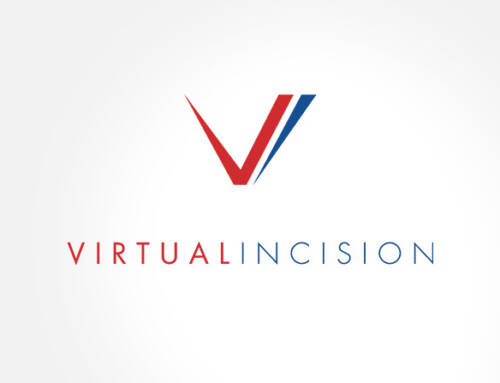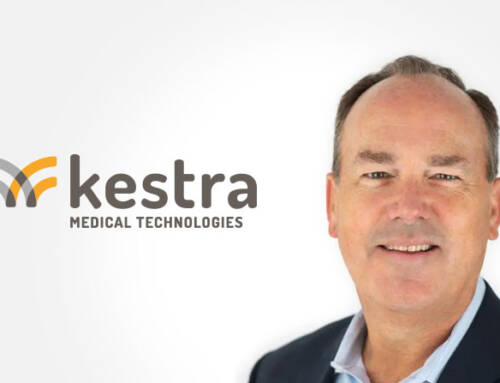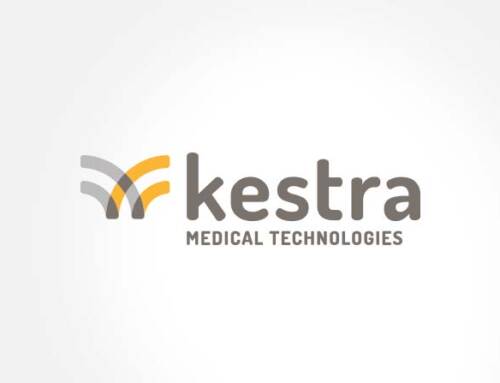
Will 2023 be remembered as the inflection point of AI in healthcare? It depends where one looks.
Technology adoption takes a long time in healthcare, usually lagging far behind other sectors such as retail, financial services, and education. It typically permeates healthcare organisations from the back to the front via three layers: The back-office (administration), operations (coordination of patients and resources), and the clinical setting (where patient care is delivered). AI adoption is no exception. Administrative functions at major US health systems, health insurers, and “payviders” (organisations providing both care and insurance) have benefitted from advances in AI for several years in the areas of revenue cycle management, compliance, and cybersecurity. Such organisations are now ramping up more intelligent ways to identify at-risk patients, improve operating room utilisation, and proactively staff emergency rooms, all leveraging predictive analytics. At the point of care however, the use of AI, while promising and highly anticipated, is still mostly at the proof-of-concept stage or at a low level of penetration; diagnostic imaging AI is the lead use case gaining traction in the clinic, enabling radiologists to gain in accuracy and efficiency, with hopefully many more use cases to follow, from voice-enabled medical documentation to clinical decision support.
In late 2022, we invested in HealthJoy, a healthcare benefits navigation platform leveraging AI-enabled triage and automation to guide employees and their dependents to the right healthcare solution, whether virtual or in-person, enabling a vast and underserved market of small- and medium-sized employers to gain access to services unavailable to them previously while yielding a 3:1 care cost ROI. In 2014, we invested in Sophia Genetics which leverages machine learning to guide oncologists with cancer treatment decisions, a platform that has since gone public and crossed USD 50M in annual revenues earlier this year.
We spent time with Daniel van den Bergh, Senior Investment Director leading our Digital Health efforts, to understand the current state of AI and its promises in care delivery.
Before we dive in, let’s talk about the news coverage on artificial intelligence. It has exploded over the last year; why is that?
The news coverage on the topic has certainly felt overwhelming this year. Headlines have covered topics ranging from arms races in new AI capabilities from the large tech incumbents, drastic stock market moves from AI enablers such as NVIDIA and Arm (the latter of which recently went public), landmark VC-backed exits such as Databrick’s acquisition of MosaicML which yielded USD 1.3 billion in realised value for its management and investors in just three years, and leadership shake-ups at OpenAI, the pioneer in generative AI. Importantly, discussions around the societal impact of AI, including potential disruption to the workplace due to automation and surveillance, have dominated the headlines. Consequently, major tech firms’ CEOs have called for US regulation around AI to avert pitfalls of the evolving technology, while over 150 European VCs and tech firm leaders voiced their concerns about potential overregulation of AI by the European Commission.
What’s important to note is that AI adoption by global enterprises is nothing new and has been going on for years. In fact, an adoption boom happened between 2017, when only 20% of surveyed global companies stated that they had adopted some form of AI, and 2019, when about 60% stated they did so. Adoption of AI then plateaued at that level into 2022.
What has changed since from the general public’s perspective can be traced back to a single event: The public release of ChatGPT by OpenAI on November 30th 2022, which triggered the snowballing news cycle of the past 12 months. The generative AI platform reached 100 million users in just 61 days. That is astonishing, especially when compared with other platforms such as Instagram (854 days to 100 million users) and Twitter (5 years to 100 million users). For most of us, even though we have been surrounded by AI when shopping online, selecting a movie to stream, or having a car drive on autosteer, interacting with Chat GPT is the first time we can directly interact with AI, and that via bi-directional human language. This is a notable step in human-computer interaction as complex bi-directional language is one of the core capabilities that has enabled humankind to get ahead of other species and organise at scale to eventually build civilisations. This next level of interaction and its possibilities as AI embeds itself in many aspects of life is what is capturing the imagination and attention of many.
Can you explain what Generative AI is, and how it differs from other types of AI?
At the risk of oversimplifying, when generative AI is applied to datasets such as texts, images, or videos, it learns how humans create and structure a final work product. When trained on books, essays, and news articles, generative algorithms based on LLMs (large language models) not only learn how humans define what a high-quality story, poem, or economic analysis looks like, they also pick up mountains of knowledge along the way. This enables an unprecedented ability to organise and present content on command.
Prior forms of AI-based algorithms are themselves building blocks to generative AI: First, AI learned how to read via NLP (natural language processing), to discern patterns via machine learning, and to see via computer vision. Generative AI sits on top of these three capabilities; and for the first time, such an algorithm can produce a human-like answer, image, or other type of work product as an output.
What’s the state of AI adoption in care delivery and what are you excited about?
First, it’s important to note that AI in healthcare reaches far beyond care delivery. It’s been adopted by biopharmaceutical companies to enable faster drug discovery and more efficient sales force deployment; it’s also been leveraged by molecular diagnostics companies to better parse signal from noise via multi-analyte cancer detection from blood samples, also known as liquid biopsy. All that enables better care delivery.
For the sake of this discussion, we’re focused on the care delivery setting and its supporting operations and administration; concretely, that means AI that is used by health systems that provide patient care, health insurers that reimburse for such care, and “payviders” that provide care and insurance under one roof.
Taking a snapshot today in late 2023 and looking through the 3-layer technology adoption framework discussed earlier (back-office, operations, clinic), AI has followed the rule of thumb of technology adoption in care delivery: It started in the back office, is now getting traction in operations, but is only slowly making its way into the clinical setting.
The reasons for a slower pace of adoption in the clinical setting are numerous: Software that influences direct patient care and therefore could pose a risk to patient safety must be regulated as a medical device by the FDA (also known as “SaMD”, or software as a medical device). Additionally, gaining trust from care providers and embedding oneself in clinical workflows takes time. Also, from a technology implementation perspective, AI requires tremendous computing power which nowadays is only scalable and affordable via cloud services; health systems are particularly reluctant to adopting software that directly integrates in electronical medical records and is not on premise in firewalled servers; this ensures patient data protection and clinical setting cybersecurity. On this last point, health systems are now finding compromises with firewalled cloud services where the solution can be deployed. But overall, these friction points explain why a higher rate of AI adoption takes place the further out functions are from patient care.
Throughout all three layers of AI adoption, a few key value drivers recur: addressing labour shortages, gaining accuracy, and enabling unprecedented scalability.
(1) The back-office layer (furthest from patient care):
This is where administrative tasks such as prior authorisations, revenue cycle management, compliance analytics, IT management, and cybersecurity all take place. AI adoption here is common in narrowly defined vertical use cases.
Each of these task areas have benefited from advances in AI and particularly machine learning. Two examples where machine learning enabled tremendous gains in anomaly detection accuracy. (1) Detecting instances of non-compliance among hospital systems’ clinicians when handling medical records or pharmacy supplies; both of which can have dire consequences in terms of patient data leakage or drug diversion. (2) Proactively identifying cybersecurity vulnerabilities tied to connectable medical equipment and other IOT in the hospital (which device number triples every five years), secure the network accordingly, and isolate devices in case of an incident by understanding the behaviour and role of the device. The innovation in both areas is enabled by multiple venture-backed companies, some of which have already successfully exited (Bluesight/Thoma Bravo and Medigate/Claroty).
Looking ahead, we’re paying attention to innovation in prior authorisation and revenue cycle management (RCM), particularly autonomous medical coding because this process sits upstream of all revenue cycle operations. This means nearly 100% of the hospital’s revenues depend on the timely processing and accuracy of medical codes, where documented patient encounters get turned into standardised codes for billing. The status quo of such operations is based on manual labour. It doesn’t scale well and is error prone. Additionally, it is subject to labour shortages. In the early days of the pandemic, since many coders had nursing backgrounds, coding operations at some health systems saw significant workforce churn as nurses rightfully moved to the frontlines of patient care. This accelerated interest and now adoption of venture-backed autonomous coding solutions by health systems. Revenue cycle management incumbents in this space have historically lacked the capabilities to develop such AI-enabled solutions and have entered into partnership agreements with autonomous medical coding platforms as a result.
(2) The operations layer (coordinates patient care):
This is where patients are identified, engaged with, and routed to the right care solution. This is also where the organisations’ personnel, assets, and other resources are coordinated. AI adoption here is at an inflection point.
AI algorithms in this layer have the potential to unify disparate information siloes in the healthcare system to enable continuity of care and efficiency gains. A handful of venture-backed companies we are tracking enable hospital systems to leverage predictive analytics to: (a) match clinical staff with forecasted patient inflows in the emergency room; and (b) predict which scheduled surgery in the operating room (OR) is likely to get cancelled, moved, or run overtime, in order to maximise OR time utilisation.
Looking ahead, we’re excited about our portfolio company HealthJoy’s continued growth as it leverages AI-enabled triage to match employees’ healthcare needs with their specific but fragmented and often confusing healthcare benefits, including their provider network, virtual care solutions (urgent care, primary care, chronic care, physical therapy, mental health, among others), and type of health plan and deductible. The results so far include a clinical care ROI of 3:1, uplift in utilisation of existing siloed solutions, decrease in administrative overhead for HR professionals at the employer, and overall increase in employee wellness and productivity.
(3) The clinical layer (closest to patient care):
This is where patient care is delivered. It includes the hospital as well as other care settings, including post-acute care facilities, the home, and virtually-accessed care. AI adoption here is nascent.
Diagnostic imaging is one of the more mature areas of innovation for AI. Throughout general radiology, mammography, pathology, and ultrasound capture, AI has demonstrated tremendous gains in accuracy and workflow efficiency. Before going into specific examples, it’s important to note that we do not foresee AI replacing radiologists over time; instead, these tools are expected to augment clinicians’ capabilities, enabling them to become more efficient, cover more ground, all that while becoming even more accurate. In pathology, the status quo of image interpretation results in two pathologists agreeing on a diagnosis only 64% of the time. AI trained on large annotated datasets can help pathologists detect malignant tissue more accurately, at scale, and via decentralised workflows. This is also true of mammographers who analyse 70-90 cases a day. An AI algorithm can not only flag anomalies but can also pre-triage cases in three buckets (clear no’s, clear yes’s, and in-between complex cases) to focus the mammographer’s time on cases that require more time and attention. In terms of ultrasound innovation, the status quo would require a professional sonographer to handle the probe to capture a high-quality image. With miniaturisation and falling costs of ultrasound probes into all-in-one handheld systems, such life-saving imaging can now be democratised; that said, the missing piece is ensuring a high-quality image at every take. AI algorithms can not only guide an unskilled individual to capture a high-quality image of the heart for example [as successfully tested by our colleague Daniel during his first try on a live patient], they also automatically measure key metrics such as ejection fraction to measure heart health. Incumbents have recently made acquisitions of venture-backed businesses in the ultrasound imaging AI space, including GE Healthcare’s acquisition of Caption Health and Philips’ acquisition of DiA Imaging Analysis.
Looking ahead, we’re excited about the potential of voice-enabled clinical documentation to get clinicians away from the keyboard during patient encounters. Charting, or the process of documenting patient interactions, takes a physician about two hours per day often afterhours and during weekends, exacerbating physician burnout and resulting labour shortages. With AI-enabled solutions, an ambient voice capture algorithm analyses the patient-physician discussion (virtual or in-person); voice recognition understand who is speaking; and the platform’s medical NLP (natural language processing) structures the content of the encounter into the medical record automatically. The physician now spends ~15 minutes/day (vs 2h+) checking and confirming the pre-populated note and pended orders. We’re tracking a number of venture-backed platforms. Incumbents have already made moves in this space, including Nuance (now part of Microsoft) and its acquisition of Saykara.
These were helpful snapshots of where AI adoption stands today in different areas of care delivery; what are your expectations for generative AI innovation in healthcare?
The innovation landscape here is moving at an astonishing speed. Just last week, I was at an investor dinner in San Francisco with a peer who also teaches the Stanford class on generative Ai in healthcare, and he mentioned that 90%+ of AI-enabled digital health companies he’s close to have been fully replacing their tech-stack to enable adoption of the latest capabilities in the space. Despite this frenetic pace of change, we can see generative AI innovation falling into two broad categories: (1) Enhancing existing operating models, and (2) creating entirely new offerings.
Regarding the first category, where we get particularly enthusiastic is the potential to augment human labour especially around repetitive tasks that don’t scale well. A good example: Doximity was the first digital health company to leverage OpenAi to build its “DocsGPT” product, enabling clinicians to reclaim time spent on administrative writing tasks such as prior auth letters, insurance appeals, and letter of patient support, among others, by automating their drafting and requiring only minor tweaks before submission. Moreover, case management teams on health plans are staffed with nurses calling members using long chase lists; conversational AI trained via large language models can not only establish a rapport with the patient but also flag any anomalies to a case manager, enabling them to reach out to a member only if needed, letting the day-to-day data capture get performed by the algorithm.
From an investment standpoint, the key outcome of such human labour augmentation is the improvement in unit economics and reduced resources needed (capital and time needed to reach scale and profitability) for tech-enabled services in which we look to invest. Such operating models, often virtual clinics, are at times difficult to invest in given low gross margins; efficiency gains would make many more such models venture-backable, scalable, and would point to a clearer path to profitability for the business.
Regarding, the second category, generative AI creating entirely new offerings, we can admit at this point that it’s too early to tell what these will look like given the pace of innovation we’ve witnessed just over the last few months. However, we can look to what is happening outside of healthcare, in retail, fintech, and education. One area worth noting is AI companionship – these are conversational algorithms that are trained to understand how humans bond and relate to each other. Inflection AI has developed Pi, which is an impressive example of the technology’s potential. Extrapolated in healthcare, such an AI companion could build a rapport with a chronically ill patient; trust and accountability are major drivers of treatment adherence, and an AI companion could emulate these characteristics to drive better outcomes at scale.
Taking a few steps back, looking at the generative AI market opportunity from the top down, Bloomberg had presented an analysis at its most recent Technology Summit forecasting that about 12% of global technology spend or about USD 1.3 trillion a year, would be directed towards generative AI by 2032. We’ve taken this analysis further and applied it to global healthcare IT spend. We’ve balanced the fact that healthcare is in general a late adopter, but also that most of the large healthcare organisations have practically all set up generative AI task forces to assess adoption. We’ve forecasted that about 10% of global healthcare IT spend or about USD 100 billion a year would be directed towards generative AI in about 10 years. To put this in perspective, global healthcare spend is expected to reach USD 15-20 trillion a year by 2032, USD 1 trillion of which is healthcare IT, USD 100B of which is generative AI. This is a momentous market opportunity, rivalled in scale only by the rise of cloud computing and mobile enablement in the past decade, so we’re actively monitoring the evolution of these capabilities as they develop and generate the next winners in our space.





